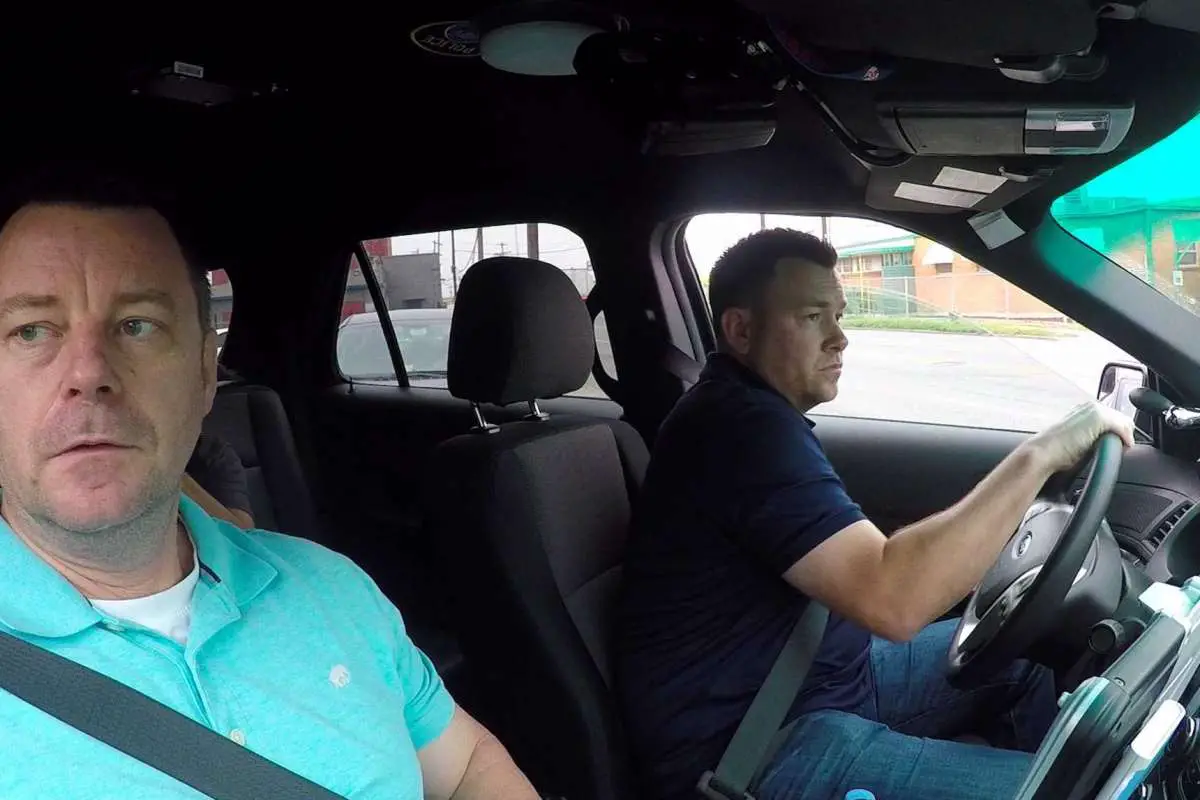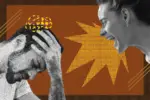A woman named Kendra sat atop of the Jones Maltsberger bridge with the intention of ending her life. It was 1:34 a.m. when policemen Ernie Stevens and Joe Smarro received the first response call from a witness in the area.
The air was tense and brimming with fear as one of the cops came closer to the woman. Ernie asked, “Are you okay?”
Joe shortly followed after his partner, careful not to crowd the shaking woman. Kendra did not comply. She instructed the officers not to talk to her or come near her in fear that they would harm her, but Ernie assured her they would not. His plea fell on deaf ears as the woman proceeded to lament her life as a drug addict.
“You don’t even know me,” she said. “Why would you care?”
Ernie replied without a second thought. “You’re right. I don’t know you, but I am going to show you with my actions that I care. I’m here to help you. You have my word.”
That night, Ernie and Joe saved Kendra’s life.
Not only did they help Kendra but several others in crisis just like her. As police officers in the mental health division, the two face challenge after challenge to better interact with those who are mentally ill.
“Ernie & Joe: Crisis Cops” is a raw and gritty documentary directed by Jenifer McShane, which follows two San Antonio policemen who are channeling new ways to approach mental health calls. The movie will premiere exclusively on HBO Nov. 19 at 9 p.m.
According to the Police Forum, new recruits spend at least 58 hours learning about firearms and only 8 hours learning about crisis intervention. In the film, Ernie and Joe work hard to see mental health beyond the scope of what they were taught in the academy.
Ernie knew he wanted to delve deeper into the tactics exercised in crisis intervention after his own training where a woman advised the officers to shoot her schizophrenic son if he were to be a danger to himself or anyone else. On the other hand, Joe has experienced mental illness first hand. He was diagnosed with Post Traumatic Stress Disorder after serving in the Iraq war, but his mental illness merely allowed him to further connect with some of the people in crisis situations.
The two policemen work on the mental health unit at the San Antonio Police Department, where there are 10 officers employed in total. The department attends and takes first response calls for those in need of crisis intervention, provide crisis training for other first responders and commit to follow-up calls at various medical treatment centers. The program was founded in 2008 in response to numerous incidences of police shootings where a large number of victims were affected by a mental illness. While the initiative was expected to last for six months, the mental health unit was extended and permitted to continue instead.
Ernie and Joe found their methods to be most successful due to the way they continuously find common ground and relate to the victims. The cops will address those in crisis wearing ordinary clothing rather than their uniforms and sit down to have a conversation with them.
In a recent crisis intervention training session, Joe spoke about the traditional style of approaching an armed person in crisis. A woman called 911 and told them she was considering taking her own life. At the time, Joe’s team was surrounding the victim and planning on ambushing her in order to remove the weapon from her reach.
“I stayed calm in the moment,” he said. “I knew what I was dealing with. I didn’t think about [a] gun. I thought about [a] person. I thought about a person in crisis.”
The film depicts these scenarios vividly and each time, Ernie and Joe are lowering themselves to ground level to connect with those in crisis. The partners exude genuineness as they dig deeper into what is bothering the person and how they can diffuse the situation before resorting to other methods.
According to the Treatment Advocacy Center, a jail or prison holds more mentally ill individuals than the largest remaining state psychiatric hospital in at least 44 states. Ernie and Joe want to prevent those rates from increasing, so they typically send crisis victims to treatment centers.
Gilbert Gonzales, Director of Bexar County’s mental health division, said, “Before 2000, our default position for mentally ill folks was jail, jail, jail… I want to keep people with mental illness from being criminalized for their mental illness.”
Ernie and Joe commit to those objectives to make sure people with mental illnesses are in treatment hospitals instead of prisons. A large aspect of why their approach works is the empathy behind the work they do. Each officer is able to put themselves into the shoes of the people they help. At the end of the day, humanity is the single commonality no one can deny.
McShane exemplifies the humanity of these two police officers beautifully between their overnight chats and humorous banter; their humanity is the driving force behind many of the crisis victims agreeing to remain calm and to seek help. In this documentary, the viewers get the opportunity to experience it all — the ups, downs and everything there is in between.
Thank you to all who were willing to tell their truths! #EndTheStigma #MentalHealthAwareness #ItsOkNotToBeOk https://t.co/9etMNgEhzp
— Ernie & Joe: Crisis Cops (@ernieandjoe) November 5, 2019
“When the worlds of the police and mentally ill collide on the street,” said Police Chief Officer William McManus, “it’s usually a bad outcome. We can pretty much assure ourselves it’s not going to work out like that because of our crisis intervention training.”
Although Ernie and Joe put in the extra effort to assure the safety of the crisis victims, there are moments when you cannot save everyone. The unit, however, does not lose its hope. Each day there is progress made in efforts to better approach crisis intervention.
After filming the documentary, it was reported the San Antonio Police Department would increase its crisis intervention training from a required eight hours to 40 hours. The mental health unit is also going to be expanded from 10 members to 20 members. This does not account for similar programs being initiated in other police departments across the country. “Ernie & Joe: Crisis Cops” provides a hopeful and innovative solution for the way police and society at large approach mental illness.
















